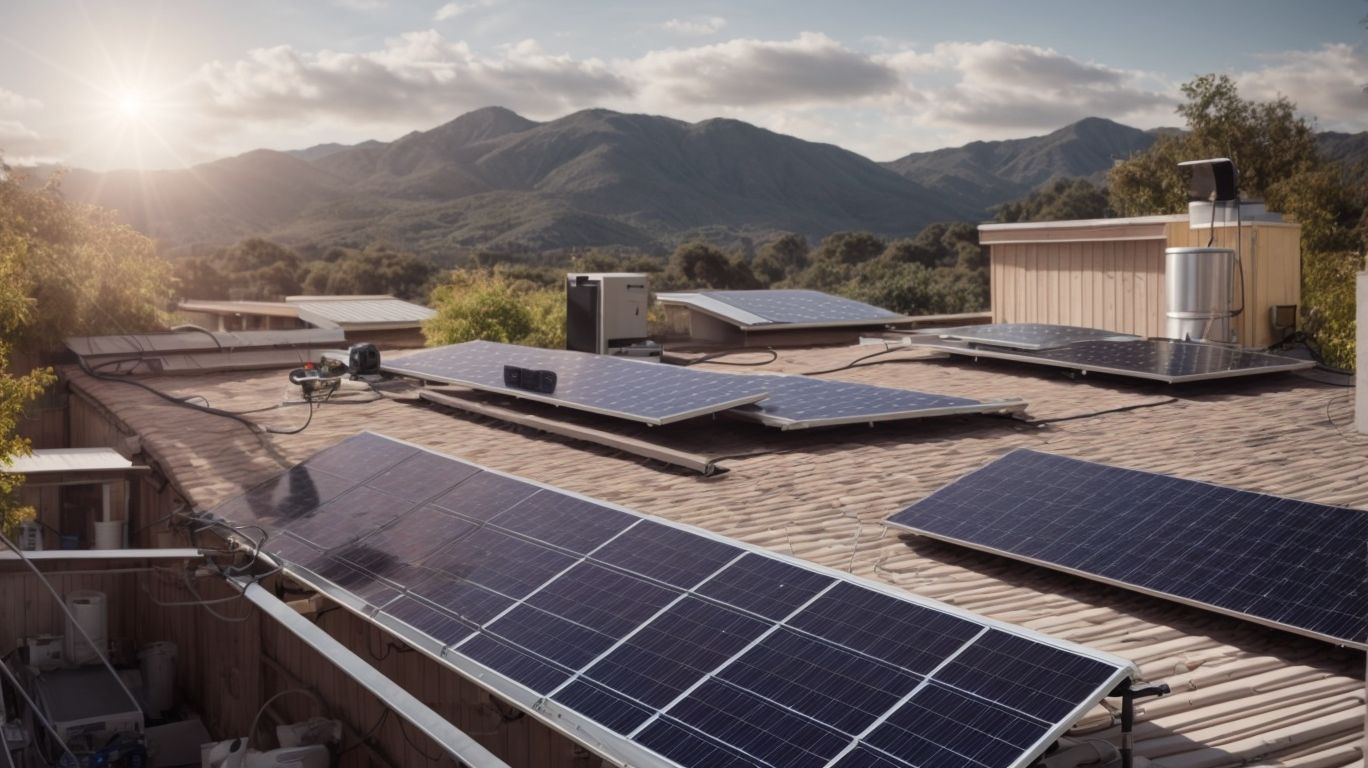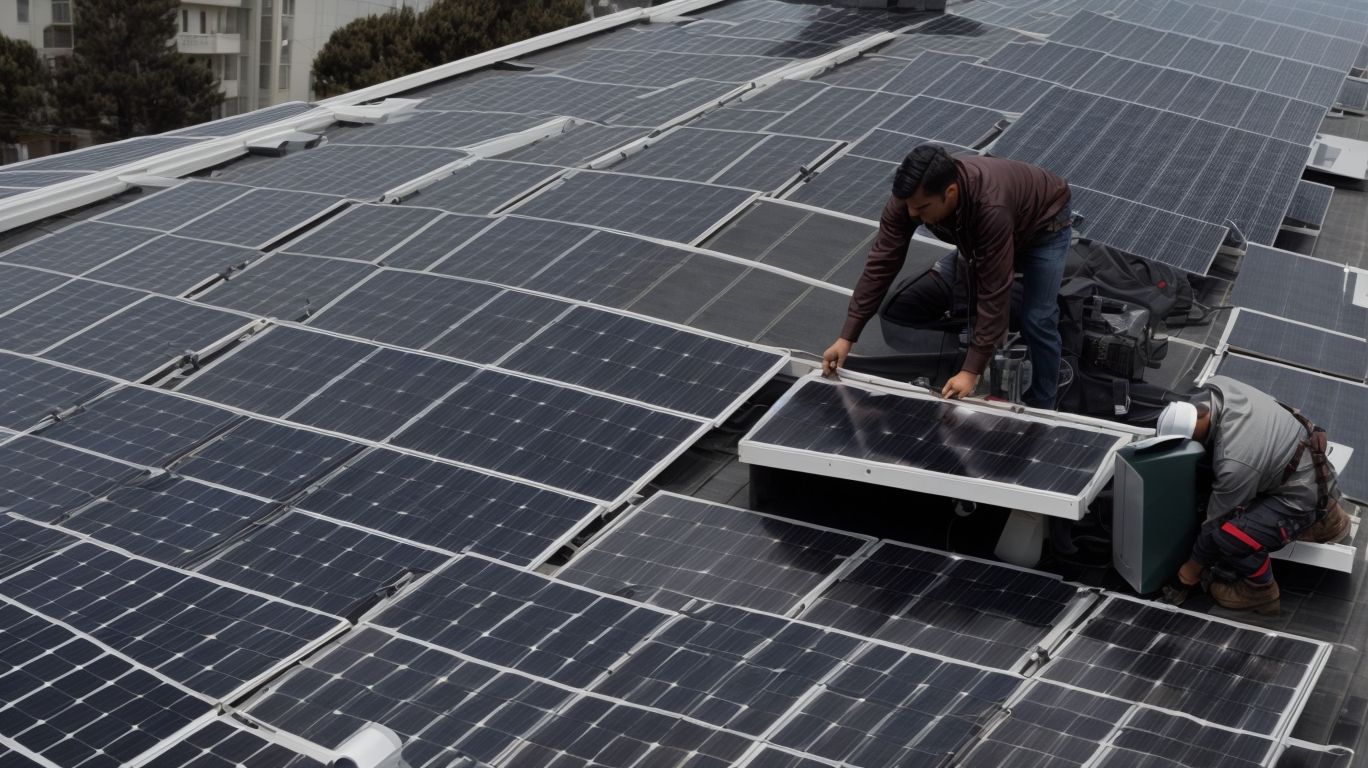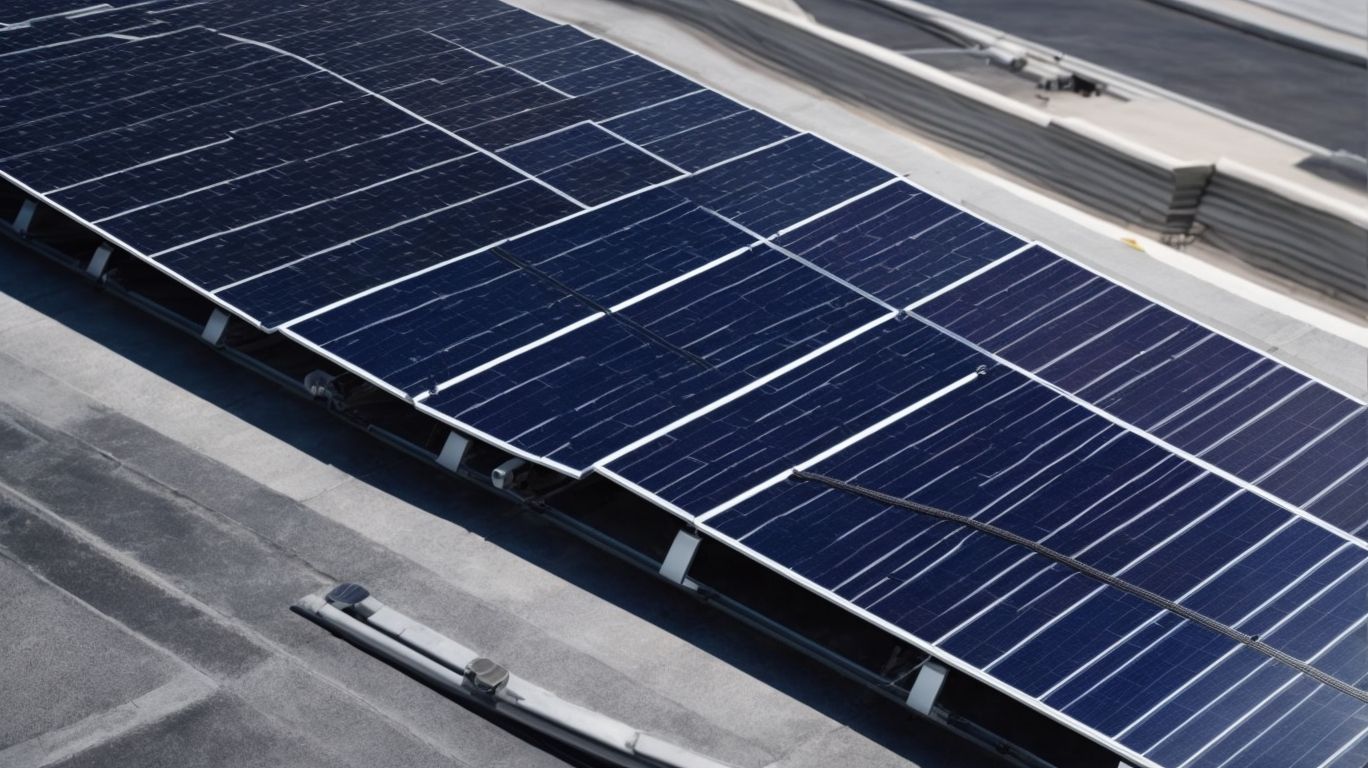
Step-by-Step Guide to Proper Solar Panel Installation
Are you considering installing solar panels on your property but not sure where to start?
This comprehensive article covers everything you need to know about solar panels – from how they work to the benefits of installation.
We also discuss the different types of solar panels available, factors to consider before installation, and the step-by-step process for a proper installation.
Whether you are looking to save on energy bills or reduce your carbon footprint, this guide will help you make an informed decision about going solar.
What Are Solar Panels?
Solar panels are devices that convert sunlight into electricity through the use of photovoltaic cells.
These panels play a crucial role in generating renewable energy, which is essential for reducing our dependence on fossil fuels and mitigating climate change. The photovoltaic cells within solar panels capture the sunlight and convert it into direct current (DC) electricity.
This electricity can then be used to power homes, businesses, and even entire communities, promoting energy efficiency and sustainability. The structure of solar panels typically consists of multiple photovoltaic cells, a metal frame for support, a glass cover to protect the cells, and wiring to collect and transmit the electricity generated.
Their ability to harness the power of the sun makes solar panels a key player in the shift towards cleaner and more environmentally friendly energy sources.
How Do Solar Panels Work?
Solar panels work by harnessing the energy from sunlight through photovoltaic cells, converting it into electricity for various applications.
The operational principles of solar panels rely on the photovoltaic cells within them, which are responsible for the conversion of sunlight into usable electrical power. These cells are made of semiconductor materials that absorb photons from the sunlight, causing the electrons to become energized and create an electric current.
This process, known as the photovoltaic effect, allows solar panels to generate electricity that can then be utilized to power homes, businesses, and even entire cities. By leveraging this technology, solar panels play a vital role in the field of renewable energy by harnessing the abundant energy resource provided by the sun.
What Are the Benefits of Solar Panel Installation?
Solar panel installation offers a range of benefits, including improved energy efficiency, reduced environmental impact, and access to financial incentives for renewable energy generation.
By harnessing the power of the sun, solar panels can significantly reduce electricity bills, providing long-term energy savings for homeowners and businesses. In addition to the economic advantages, opting for solar energy contributes to a greener and more sustainable future, diminishing reliance on finite resources and combating climate change. The positive impact extends beyond personal finances, as solar panels aid in reducing carbon emissions, thus promoting cleaner air and a healthier environment for communities. Government incentives and rebates further sweeten the deal, making renewable energy adoption a smart investment with both short and long-term benefits.
Cost Savings on Energy Bills
One of the primary benefits of solar panel installation is the significant cost savings it offers on energy bills over time, resulting in a favorable return on investment (ROI).
By harnessing the power of the sun, households can drastically reduce their dependence on traditional energy sources, translating into lower electricity bills in the long run. With solar panels in place, homeowners not only enjoy reduced monthly expenses but also shield themselves from fluctuations in utility costs. The initial investment in solar panels can lead to substantial savings over the system’s lifetime, making it a financially savvy choice for those looking to cut down on household expenses and increase overall financial stability.
Environmental Benefits
In addition to cost savings, solar panel installation contributes significantly to environmental benefits by promoting sustainability and reducing reliance on traditional energy sources.
By harnessing the power of the sun, solar panels enable the use of renewable energy sources, which plays a vital role in reducing carbon footprint and combating climate change. The transition to solar energy helps to create a cleaner and greener environment, as it produces electricity without emitting harmful greenhouse gases. This shift towards sustainable energy not only benefits the planet but also sets a positive example for future generations, highlighting the importance of embracing eco-friendly solutions for a brighter tomorrow.
Increase in Property Value
Solar panel installation can lead to an increase in property value due to the perceived energy efficiency and environmental benefits associated with having a solar energy system.
Buyers are increasingly prioritizing sustainable features like solar panels when considering a home purchase, viewing them not only as a way to lower energy costs but also as a commitment to reducing their carbon footprint. As the demand for eco-friendly homes rises, properties with solar panels often command higher resale values and attract a larger pool of potential buyers. Studies have shown that homes with solar panels tend to sell faster than those without, highlighting the market appeal and financial advantages of investing in renewable energy sources for residential properties.
What Are the Different Types of Solar Panels?
There are several types of solar panels available in the market, including monocrystalline, polycrystalline, and thin-film panels, each with unique characteristics and performance attributes.
- Monocrystalline panels are known for their high efficiency rates due to their purity in silicon composition, making them a popular choice for residential installations where space is limited.
- On the other hand, polycrystalline panels are slightly less efficient but are more cost-effective, making them ideal for larger commercial projects.
- Thin-film panels are lightweight and flexible, making them suitable for curved or irregular surfaces, but they have lower efficiencies compared to crystalline panels.
Understanding the differences between these panel types can help consumers make informed decisions based on their specific needs and constraints.
Monocrystalline Panels
Monocrystalline solar panels are known for their high efficiency and long lifespan, making them a popular choice for residential and commercial solar installations.
The key distinguishing feature of monocrystalline panels lies in their high energy conversion efficiency, which translates to greater electricity production from the same sunlight exposure compared to other types of solar panels. This is particularly beneficial for optimizing space utilization on rooftops or land. The durability of monocrystalline panels ensures a long operational life, requiring minimal maintenance over time. Their stable performance in various weather conditions further enhances their appeal for sustainable energy generation.
Polycrystalline Panels
Polycrystalline solar panels offer a cost-effective alternative with good efficiency levels, providing a balance between performance and affordability for solar panel installations.
These panels are known for their durability and stability, requiring minimal maintenance over their lifespan. Due to their manufacturing process, polycrystalline panels are more budget-friendly compared to monocrystalline options, making them an attractive choice for those looking to go solar without breaking the bank. With advancements in technology, polycrystalline panels are becoming increasingly efficient, ensuring that homeowners and businesses can generate more electricity from sunlight. This blend of affordability and performance makes polycrystalline solar panels a popular choice in the solar energy market.
Thin-Film Panels
Thin-film solar panels are lightweight and flexible, offering cost advantages and better performance in low-light conditions, while also exhibiting good weather resistance properties.
These unique characteristics make thin-film panels an ideal choice for various installation scenarios, such as on curved surfaces or in locations with limited space. The flexibility of these panels allows for easy integration into building designs, making them a popular choice for architects and developers looking to incorporate solar energy solutions seamlessly. Thin-film solar panels perform well under diverse weather conditions, including high temperatures and shading, ensuring consistent energy production throughout the day.
What Factors Should Be Considered Before Installing Solar Panels?
Several critical factors should be evaluated before installing solar panels, including the location and sun exposure of the property, the condition and structure of the roof, and the energy consumption needs of the household or facility.
Assessing the location’s suitability for solar panel installation is crucial as it directly impacts the efficiency of harnessing solar energy. A property with unobstructed access to sunlight throughout the day will yield better results.
Evaluating the roof condition is essential to ensure it can support the weight of the panels and withstand environmental factors.
Understanding the energy requirements of the household or facility helps determine the size and capacity of the solar panel system needed to meet those demands effectively.
These factors collectively determine the feasibility and efficiency of the solar panel installation.
Location and Sun Exposure
The location of a property and its sun exposure play a crucial role in determining the solar potential and energy generation capacity of solar panels, influenced by factors such as solar irradiance and shading.
- Solar panels placed in areas with high solar irradiance levels receive more sunlight, leading to increased energy production.
- Conversely, shading from nearby structures or trees can significantly reduce the efficiency of solar panels.
- Proper orientation of the panels towards the sun also impacts their performance, as panels facing south generally generate more electricity.
It is essential to select an optimal site for installing solar panels to ensure maximum exposure to sunlight throughout the day, thereby maximizing energy output and improving overall system efficiency.
Roof Condition and Structure
The condition and structure of the roof are essential considerations for solar panel installation, as they determine the mounting options, tilt angles, and overall safety of the solar array on the roof.
A secure and durable roof is crucial for the successful long-term performance of solar panels. The roof’s ability to support the weight of the solar array and withstand environmental factors such as wind and snow loads is paramount. Proper inclination angles also play a significant role in maximizing energy production. Ensuring the structural integrity of the roof is essential to prevent any damage or leaks that could compromise the system’s efficiency.
Evaluating the roof’s suitability involves assessing factors like orientation, shading, and obstructions to optimize sunlight exposure and enhance the system’s overall effectiveness.
Energy Consumption and Needs
Understanding the energy consumption patterns and needs of a property is crucial for sizing solar panel systems correctly and determining the grid connection requirements, potential net metering benefits, and overall energy independence.
By analyzing energy consumption, homeowners or business owners can strategically design solar energy systems that align with their specific needs. This in-depth scrutiny assists in deciding on the best grid connection options, ensuring seamless integration of solar power into the existing energy infrastructure.
A thorough assessment of energy needs enables individuals to leverage net metering advantages by optimizing energy production and consumption. Implementing energy-efficient practices and technologies can further amplify self-sufficiency, reducing reliance on the grid and enhancing sustainability for the long term.
What Are the Steps for Proper Solar Panel Installation?
- Proper solar panel installation involves a step-by-step process that includes site assessment and planning, obtaining necessary permits and approvals, mounting the panels securely, connecting them to the electrical system, and conducting a final inspection for commissioning.
Site assessment is the initial step, where the suitability of the location for solar panel installation is evaluated based on factors like sunlight exposure and structural integrity.
Permits must be acquired from local authorities, ensuring compliance with building codes and regulations.
Mounting techniques vary depending on the roof structure, with options like roof penetration or ballasted systems.
Wiring considerations involve safely connecting the panels to the inverter and electrical panel.
Thorough inspection post-installation is crucial to confirm proper functioning and compliance with quality standards.
Site Assessment and Planning
The initial phase of solar panel installation includes a comprehensive site assessment and planning process to determine the optimal orientation, tilt angles, and shading factors that influence energy efficiency and performance.
This critical stage involves meticulous evaluation of the site’s geographical location, surrounding structures, and potential obstructions that could impact sunlight exposure. By analyzing these factors, installers can strategically place solar panels for maximum sunlight absorption throughout the day. Proper planning not only enhances the system’s energy production but also ensures longevity and sustainability. Utilizing technology like solar pathfinders and shading analysis tools allows for accurate predictions on how shadows may shift during different seasons, enabling installers to make informed decisions for optimal placement.
Obtaining Necessary Permits and Approvals
Securing the required permits and approvals for solar panel installation involves navigating local regulations, compliance requirements, and engaging with qualified installers or contractors for professional guidance.
These permits are essential to ensure that the solar panel system meets safety standards, structural requirements, and environmental considerations. Installers play a crucial role in assisting clients with the permit application process, as they are well-versed in the intricacies of local building codes and zoning ordinances. By working closely with installers, homeowners can streamline the approval process and avoid potential roadblocks. Installers not only help with paperwork but also ensure that the installation adheres to all relevant regulatory standards, giving homeowners peace of mind knowing the project is compliant and safe.
Mounting the Panels
Mounting the solar panels securely on the roof or ground involves selecting appropriate mounting hardware, ensuring proper alignment, and optimizing the tilt and orientation angles for maximum energy capture.
For roof-mounted systems, it is essential to consider the roof’s structural integrity to support the added weight of the solar panels. When installing the mounting hardware, it is advisable to follow the manufacturer’s guidelines to ensure a secure attachment.
Ground-mounted systems offer flexibility in adjusting panel orientation and tilt angles for optimal sunlight exposure. Proper alignment of the solar panels with the sun’s path throughout the day is crucial for maximizing energy production. Regularly monitoring and adjusting the panel orientation can enhance overall system efficiency.
Connecting the Panels to the Electrical System
Connecting the solar panels to the electrical system involves wiring the panels in series or parallel configurations, installing inverters for DC to AC conversion, and integrating the system with the grid connection for energy distribution.
Proper electrical wiring is crucial in ensuring the efficient functioning of the solar panel system. When wiring the panels, it is essential to follow the manufacturer’s guidelines to optimize energy production. Inverter installation plays a key role in converting the direct current generated by the panels into alternating current usable for household appliances. The grid interconnection procedures are vital for feeding excess energy back into the grid, allowing for potential energy credits or savings. Compliance with safety standards and meticulous equipment selection are fundamental aspects to consider during the entire installation process.
Final Inspection and Commissioning
-
- The final step in solar panel installation involves conducting a thorough inspection to verify system integrity, performance compliance, and adherence to safety precautions before commissioning the system for energy production.
This final inspection is crucial as it ensures that all components are installed correctly and in working order, reducing the risk of malfunctions and safety hazards. Safety checks are particularly essential to prevent any potential electrical issues or accidents.
-
- Performance monitoring during the final inspection helps assess the system’s efficiency and output capacity. Quality assurance measures at this stage guarantee that the solar panel installation meets industry standards and functions optimally for energy generation.
Ongoing system monitoring post-installation is important to track performance and energy output, ensuring optimal efficiency and longevity of the solar energy system.




No Comments